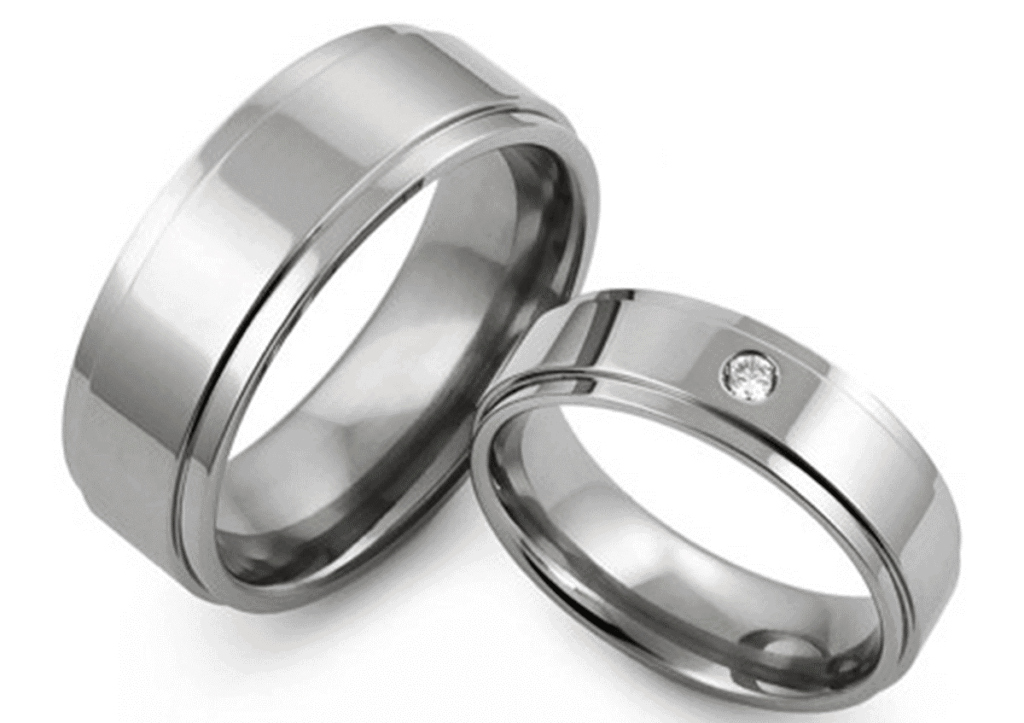When buying an engagement ring, the first question that will probably pop up in your mind is: With stone or without? After that, comes the next: What metal will it be? Gold (yellow, rose, and white gold), is the most common. Not far behind are platinum and sterling silver, such as the one used in this Pandora review. Way out the back, but no less popular is titanium. They are all good, beautiful, and fit for engagement rings. Pitting one against the other is an endless exercise in futility because each has its own strengths and weaknesses.
Platinum vs. Titanium
For the sake of enriching your knowledge of jewelry settings, and helping you make the best decision, this article shall focus on two metals commonly used in jewelry making: platinum vs titanium?
But before pitting them side-by-side against each other, let’s first go down to the basics…
What is Platinum?
Platinum is a silver-white metal and was once known as “white gold,” with Pt as its chemical symbol.
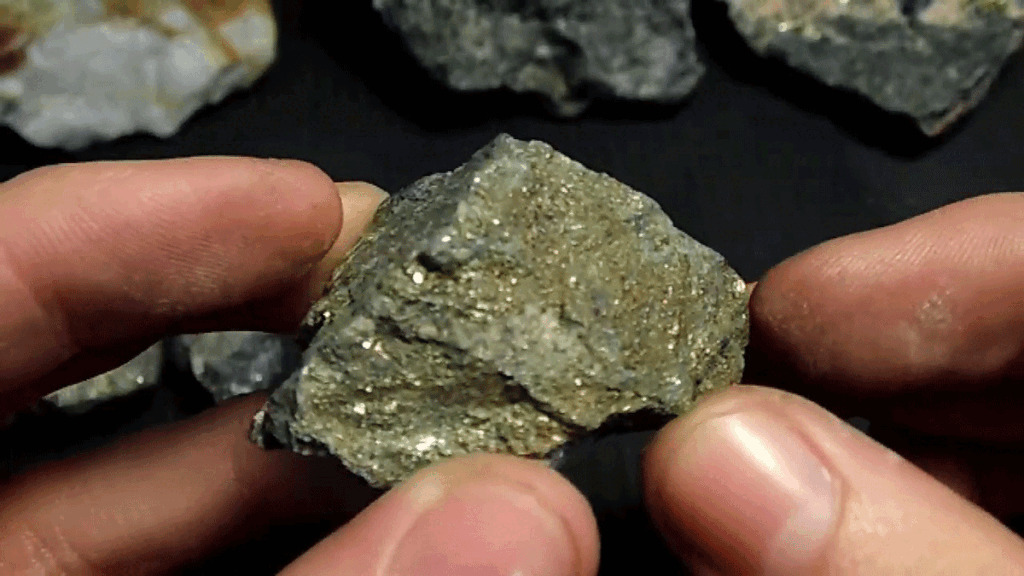
Man has been using platinum since ancient times. Ancient Egyptians and early Americans used platinum for jewelry and decorative pieces. However, its first recorded mention happened in 1557, when an Italian physician, Julius Scaliger, described a metal found in Central America as “Platina,” meaning “little silver.”
Then in 1741, British scientist Charles Wood introduced platinum as new metal, describing some of its attributes and possible commercial applications.
Platinum belongs to the same group as gold, silver, copper, and titanium. They all have an atomic structure that makes them easily bond with other elements.
It is extremely resistant to corrosion and discoloration; doesn’t oxidize and is unaffected by common acids.
Platinum is very rare—it is estimated to be about five parts per billion by weight of the Earth’s crust. The metal is very soft and malleable—making it easy to shape. And ductile enough to be stretched into a wire.
It is a valued and desired metal with applications in catalytic converters, pacemakers, electrical contacts, medication, magnets, and jewelry.
Platinum in jewelry
About 30% of mined platinum is used in jewelry. And much of the famous diamonds in the world such as the Hope Diamond, and Elizabeth Taylor’s diamond collection are all set in platinum.
Jewelers love it because it can be repeatedly reheated and cooled without oxidation effects, and slender sections of the metal will retain their shape, providing a secure setting for gemstones.
Platinum is strong and resistant to tarnishing. Jewelry made from platinum can withstand the rigors of daily wear for a long. long time. Obviously, it’s a great choice for setting, but keep in mind that there are things to consider when choosing a platinum setting.
Though platinum in jewelry is often 95% pure, it is often alloyed with copper and cobalt to optimize its characteristics and wear properties.
What is Titanium?
Titanium (Ti), the 22nd element in the Periodic Table, is named after the Titans—the Greek gods of myth.
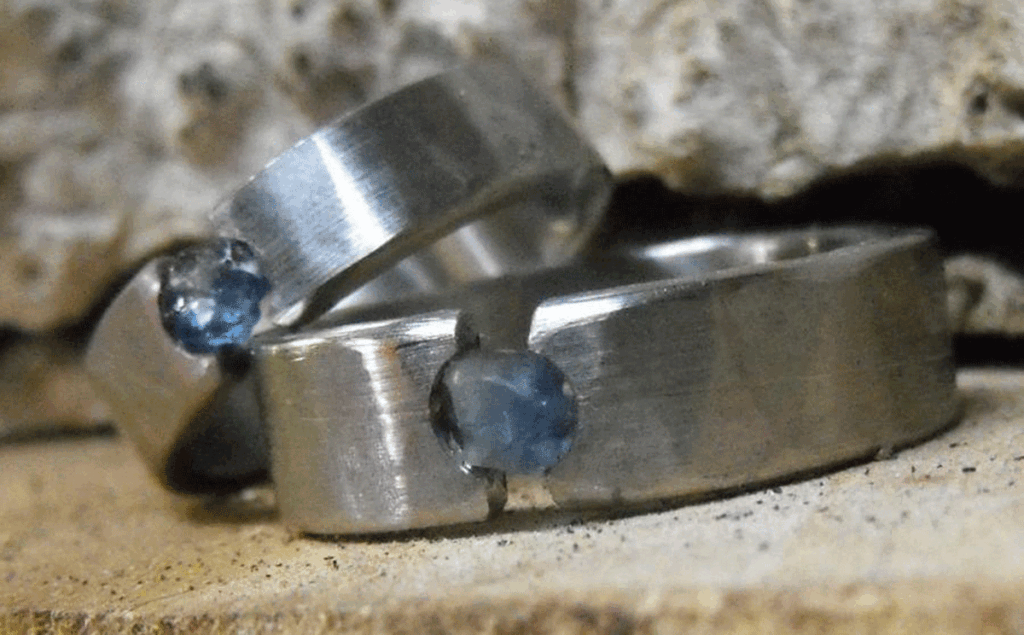
Though it is the ninth most abundant metal on the Earth’s crust, it wasn’t discovered until 1791 by English amateur geologist, Rev. William Gregor. While roaming around a creek bed, he found deposits of black, metallic sand. Upon examination, he observed it as a mixture of magnetite (a common form of iron oxide), and new metal. He called it “manaccanite.”
Four years later, Martin Heinrich Klaproth, a German scientist, while examining ores from Hungary, discovered that it contained a never-before-described chemical element. He called it titanium. Upon verification and referencing, he confirmed that was similar to manaccanite.
Titanium is very strong and lightweight. It is as strong as steel, but only 45% of the weight. It’s also twice as strong as aluminum, but only 60% heavier. What’s more, it is corrosion-resistant.
The metal is used from airliners to lacrosse sticks; body piercings, medical equipment, sunscreen, and jewelry.
Titanium in jewelry
Titanium has become popular in jewelry because of its unique properties. It is rust-resistant and hypoallergenic; non-toxic to the human body.
It is strong and much less expensive than other ring materials like gold or platinum. When done well, it is very attractive and can be anodized to different colors.
What is Better Platinum or Titanium?
Platinum and titanium are strategic metals meaning they are used for making certain war equipment. They are lightweight and strong. Both are rust-resistant and are not affected by moisture, air, water, corrosive substances, etc.
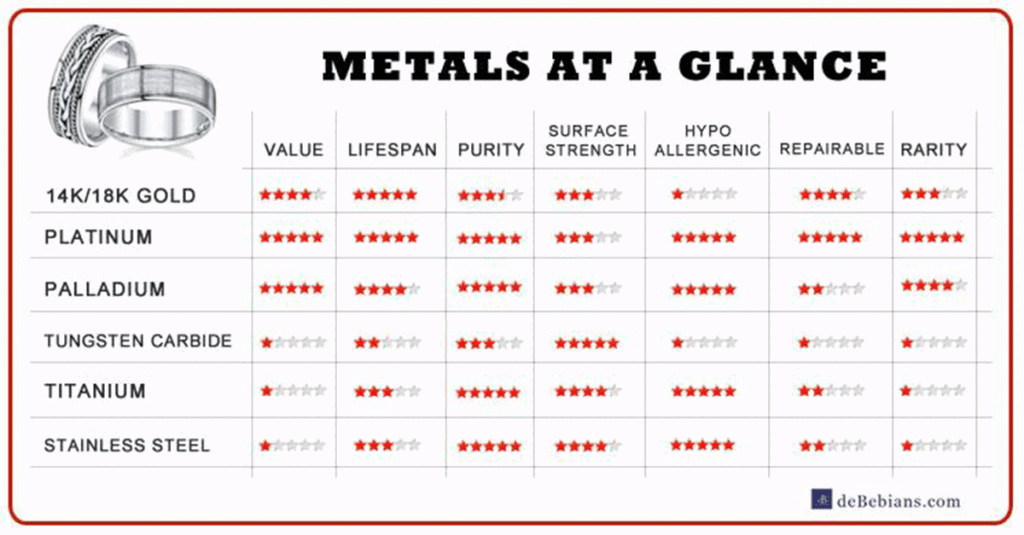
But to gauge which of the two is better, read on…
While both share the same qualities of durability, being hypoallergenic, color, and low maintenance, they also have differences such as…
Look
Though not very significant, they differ in appearance. Platinum jewelry is lighter and on the whiter side of silver, while titanium appears darker, or on the dark side of silver. But both can be coated with other metals to change their hues.
Titanium jewelry has a unique look—a kind of modern and masculine, which many love, though not by everyone. Platinum, on the other hand, is generic and appeals to the wider mass of jewelry lovers.
Because of its toughness, titanium engagement ring settings are not as varied and versatile as those using platinum.
Rarity
Titanium is the hands-down winner in this category. It is a lot more abundant than platinum. And this has a significant impact on its value. So to the question, “Is platinum or titanium more expensive?” Assuming all things are equal, platinum is more expensive.
Toughness
In this category, both are on the same level. Both are tough, durable, and resistant to wear. However, while titanium can withstand the rigors of daily wear more, it cannot be resized to adjust to the changing size of your ring finger.
So if you want to know which is tougher, titanium or platinum, it’s a tie.
Price
When comparing platinum vs titanium price, remember that platinum is a lot rarer than titanium. It is also more in demand in jewelry-making than titanium. If you take these two together, then it’s easy to get a good idea of their price structures.
For example, a 4 mm, 95% pure platinum ring costs around $800. While a titanium ring, of similar size, can be bought for $100 or more. See the difference?
Maintenance
In this category, titanium has a slight edge over platinum. It will look just as good 10 years later as it did on day one. While platinum needs a little regular polishing and brushing.
But both will look just as well many years into the future.
So the question, which is better between the two?
The answer lies entirely with you. Nobody can tell you what kind of engagement or wedding band is best for you, but yourself.
Here’s the deal-breaker: If you are looking for an engagement ring that is simple, strong, and cheap, then titanium is a good choice. But if you want something more fanciful, then platinum is best.
For example, the following illustrates the huge difference between platinum vs titanium ring.
Is There Anything Better Than Platinum?
When buying an engagement ring, people’s focus is on the diamond, or gemstone, that glorifies it. Little or no attention is given to the metal that holds it in place.
Currently, the most common precious metals used in engagement rings are:
Gold
This has always been traditional engagement or wedding ring metal. Its soft and warm yellow luster is attractive and pleasing to the eyes.
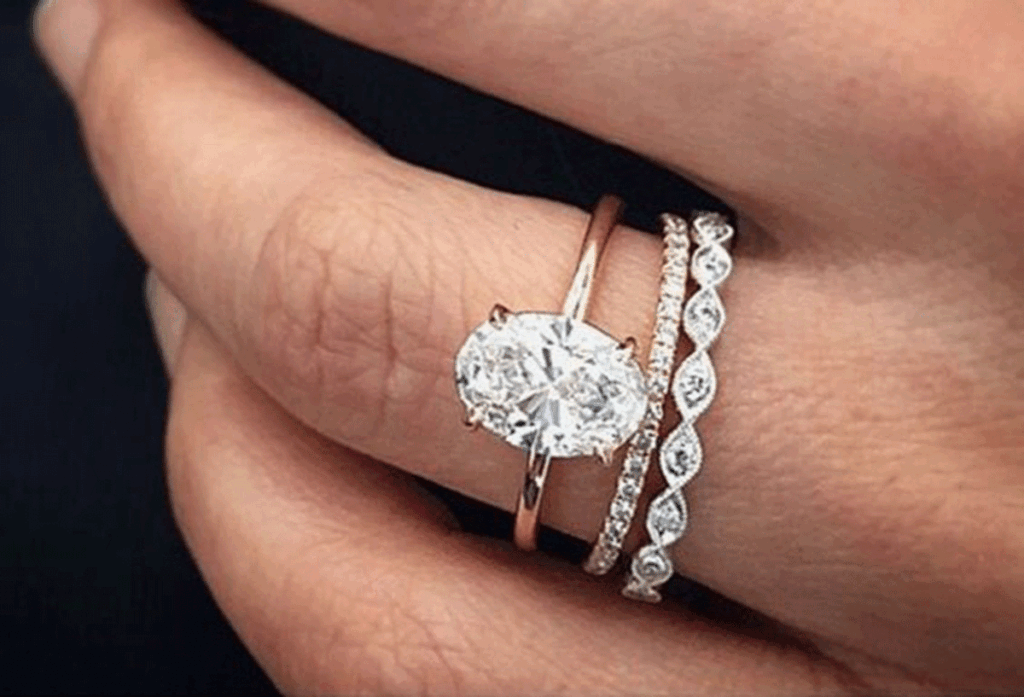
And, thanks to modern alloying techniques, gold now comes in various shades such as:
- Yellow gold – pure gold alloyed with a little silver and copper, just like the one in this Sams Club review
- White gold – pure gold with a little palladium and silver or nickel, copper, and zinc. To give it extra whiteness and strength, it is coated with rhodium.
- Green gold – called as such because of its yellowish-green appearance due to the addition of a little silver.
- Pink or Rose gold – this is increasingly becoming popular these days. This is created by mixing pure gold with copper. The amount of copper in the mixture gives gold different hues. It’s a great mix but needs jewelry cleaning and care from time to time.
Sterling silver
This is made from pure silver mixed with copper and other metals to make it more durable. It can range in color from bright white to grayish-white and can be of a matte or shiny finish.
Silver has been valued for centuries and was once more precious than gold. The ancients called it the lunar metal—cool and luminous—like the moon’s reflection on water.
Other than the above, there are other alternative metals that are lightweight, modern-looking, and durable. They are popular among men who aren’t used to wearing jewelry. Here are some of them:
Alternative Settings
Stainless steel
Once used for utensils, stainless steel has found a following in the jewelry market because it is strong, durable, and cheap.
The metal is an alloy of iron and carbon mixed with chromium and other alloying elements.
It is shiny and strong and can be polished to take on a different appearance.
Cobalt
Cobalt alloy is made up of natural cobalt and chromium with small amounts of molybdenum, nickel, iron, carbon, manganese, and silicone. It is mainly used in the medical field and aerospace industry. Of late, it has gained entry into the jewelry market.
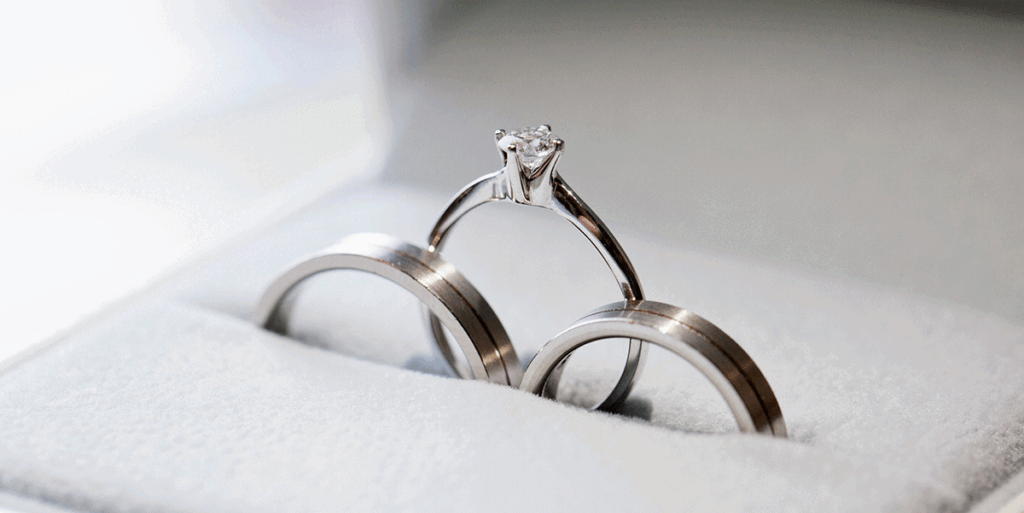
It looks like platinum, only four times harder. It is also hypoallergenic, scratch-resistant, and allows for re-sizing.
The downside is that it is very rare. While cobalt is essential to life, only trace amounts can be found in the Earth’s crust (2,500 times rarer than iron).
Titanium
Titanium, like cobalt, was originally created for industrial purposes. Because of it being lightweight, it found its way into the jewelry market for people who want something light.
Titanium can come in various shades like black, grey, or silver. It is also scratch-resistant, tough, and hypoallergenic.
Tungsten
Remember those bulb filaments of yore? They were tungsten.
It is silvery-white in appearance, very dense, and tough—four times harder than titanium.
In jewelry form, it is the tungsten carbide form that is far stronger than silver or gold. This allows tungsten engagement or wedding bands to withstand ordinary forces even when used daily.
However, it is also very rare.
Palladium
Palladium answers the question, “Is there anything better than platinum?”
Like platinum, it has a soft silver-white appearance. But is less dense and has a very low melting point. In fact, it has the lowest melting point among the platinum family of metals.
Palladium is soft and ductile. But annealing and cold-working will greatly increase its strength and hardness.
Its malleability makes it great for jewelry production; very durable and more scratch-resistant than platinum. And because of its naturally white color, it requires no rhodium plating as white gold does.
Platinum vs Titanium vs White Gold?
The metals mentioned above practically cover the entire genre of engagement or wedding ring settings. But what if you want to narrow down your choices to three and want to know which is better: platinum vs titanium vs. white gold, how would things look like and how much would it cost you? These are but some of the things to consider when choosing the best metal for your engagement ring
Platinum vs. titanium has been thoroughly discussed previously and it will be redundant to cover them again here. So to get to the meat of the issue, it is best to compare both against white gold.
- Platinum vs. white gold: the 14K gold is harder than platinum and suffers less from scratch. But platinum is stiffer and can hold the diamond in place a lot longer than gold. Both are good for daily wear, but in the long run, platinum would cost less than white gold.
- Titanium vs. white gold: titanium is strong while gold is soft. A ring made of gold is easy to wear down, bend, or scratch while that made of titanium will last much longer.
Platinum vs titanium is a comparison without any definite outcome. Both are beautiful and possess qualities that make them excellent settings. And they both have a considerable following. However, people who are budget-conscious may opt for titanium because of its price.
And we’re done here. Now that you know a fair amount of information about platinum vs titanium, you’re better equipped when it goes down to choosing between the two. But keep in mind that whichever you choose, your final decision rests on what you want.
Now, if you’re interested in more facts about diamond settings, check out our article “Setting in Stone: Understanding the Basics of Diamond Settings.”
